Experts explain what cleaning products you shouldn't mix. Spoiler alert—steer clear of sanitizing shortcuts mixing bleach with anything but water.
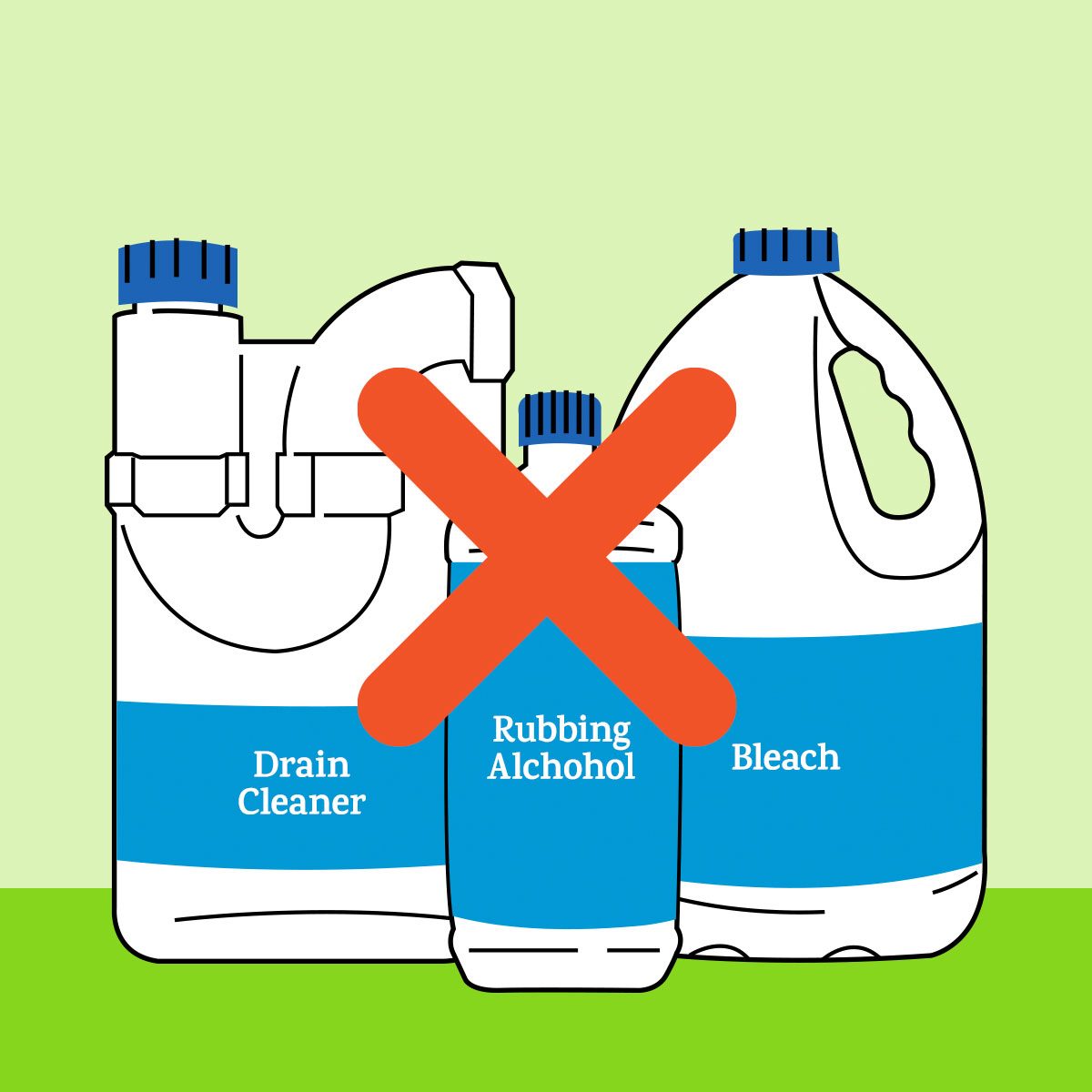
Cleaning Products You Should Never Mix— and Why

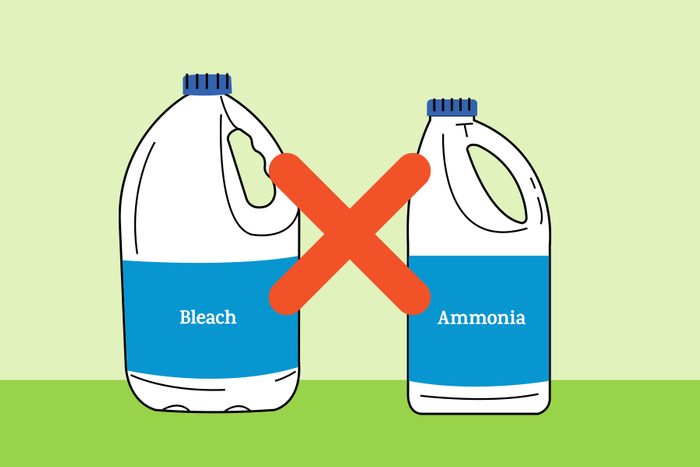
Bleach and Ammonia
“When sodium hypochlorite, the active ingredient in bleach, reacts with ammonia, it produces chloramine vapors, which can cause irritation to the respiratory system, eyes, and skin,” Dr. Gráinne Cunniffe, the Science Lead at Allergy Standards Ltd, explains. “Prolonged exposure to chloramine gasses may contribute to breathing discomfort, buildup of fluids in the lungs and long term respiratory issues.”
Even if you are aware of this common combination of cleaning products you shouldn’t mix, it’s one of those examples where you might be inadvertently mixing them. Many dish soaps contain ammonia, for example. If you clean your counters with a dish soap solution but don’t rinse it off properly before disinfecting with a bleach solution, that can still create chloramine gases.
Also, be careful if you use bleach to clean toilet bowls or cat litter trays—urine also contains ammonia.
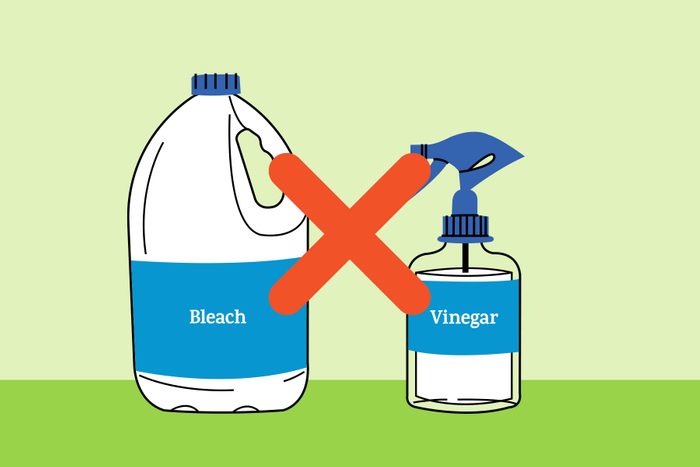
Bleach and Vinegar (or Other Acidic Cleaners)
“Combining bleach with acidic substances like vinegar or toilet bowl cleaners can produce chlorine gas, which may cause respiratory irritation,” Dr. Cunniffe says. She explains that it is a bigger problem when you’re using the products in poorly ventilated spaces. “Volatile organic chemicals (VOCs) and vapors can evaporate into the breathing zone and be inhaled.”
Some other common examples of acid-based cleaning products you shouldn’t mix with bleach include:
-
Glass and window cleaners
-
Drain cleaners
-
Oven cleaners
-
Mold and mildew cleaners
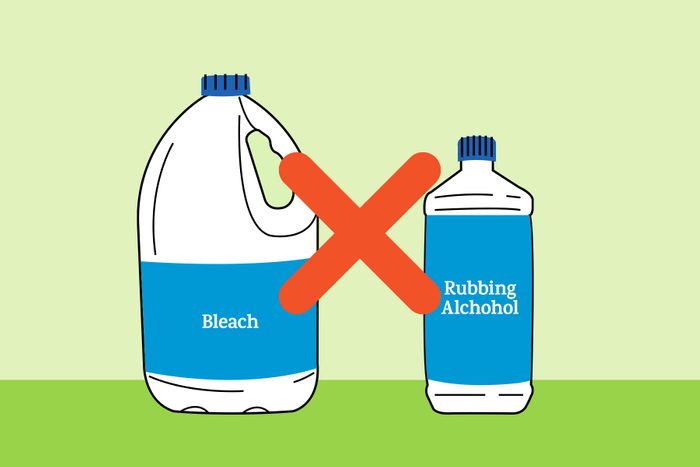
Bleach and Rubbing Alcohol
Dr. Cunniffe explains that combining common cleaning substances rubbing alcohol and bleach can produce chloroform and other by-products that may cause dizziness and nausea when inhaled in high concentrations. If you are using these products for disinfecting surfaces, stick with mixing only one or the other with water.
Food Safety Specialist Nicole Richard also explains that it is important to select non-scented sodium hypochlorite (bleach) solutions approved for use on food-contact surfaces. “Scented bleach products are not appropriate for this purpose because they have additional ingredients that can leave a residue on the food-contact surface,” she says.
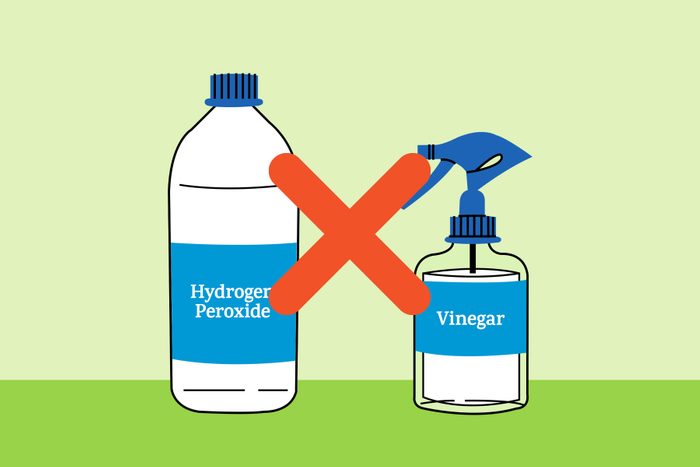
Hydrogen Peroxide and Vinegar
“Mixing hydrogen peroxide with vinegar forms peracetic acid, a substance that can be irritating to the skin, eyes, and respiratory system,” Dr. Cunniffe says.
Some professionals spray with hydrogen peroxide, wipe the surface, and then spray with cleaning vinegar. However, you shouldn’t mix these cleaning products in a spray bottle. Even when using products separately, Dr. Cunniffe always recommends using gloves to reduce the risk of chemicals irritating or damaging the skin or being absorbed into the bloodstream.
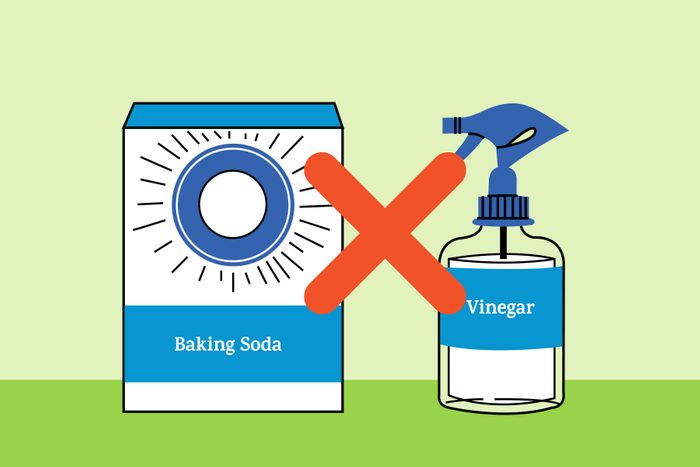
Baking Soda and Vinegar
Baking soda and vinegar are two common natural cleaning products that are considered pretty safe. It’s not unusual to see vinegar cleaning hacks recommending combining the two to make a grease-removing multipurpose paste. However, there’s no science to support this, and although the fizzing looks impressive, the chemical reaction results in a not-so-impressive salty water solution. Plus, the paste could explode if stored in an airtight container.

Two Types of Drain Cleaner
If you’re trying to unclog a kitchen sink drain and you’ve put a drain cleaner down, but it hasn’t shifted the blockage, you might be considering trying a different brand to push things through. Don’t! The original drain cleaner could still be sitting on top of the blockage and could combine with the new cleaner you put down. These products contain strong chemicals that vary by brand. Mixing them can create a corrosive concoction that may release toxic vapors.
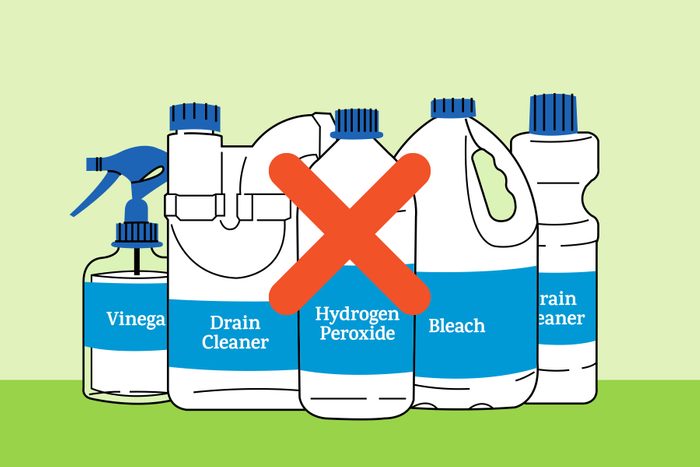
What to Do If You Accidentally Combine Cleaning Products You Shouldn’t Mix
If you’ve made a mistake when cleaning with bleach and you accidentally combine it with other chemicals like ammonia, acidic substances or rubbing alcohol, move to a well-ventilated area straight away. Call 911 if you are experiencing problems breathing. Your local poison control center can provide advice on when and how to safely clean up the chemical concoction. Dr. Cunniffe explains the space will need thorough ventilation, possibly with air scrubbers or fans to dissipate any accumulation of harmful fumes.
About the Experts
- Dr. Gráinne Cunniffe is the Science Lead at Allergy Standards Ltd, the international standards and certification body for the Asthma & Allergy Friendly® Certification Program; email interview, 7. Feb, 2025.
- Nicole Richard is a Research Associate and Food Safety Specialist at the Department of Fisheries, Animal and Veterinary Science at the University of Rhode Island; email interview, 4. Feb, 2025.




















